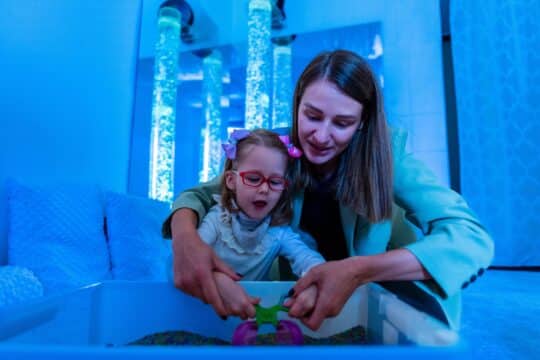One of the toughest components to handle in education is the ability to utilize assessments in the most appropriate ways. With the rapid evolution of technology, the fluctuations in the world economies and job markets, and the requirements to challenge students in thought processes, we no longer can follow the traditional route of teaching a unit and giving an exam just to get a grade. Assessments must be designed with objectives that promote varying levels of cognition, while tying in real-life experiences.
But how do educators achieve these types of objectives with assessments? How do they elevate students’ understanding beyond the rote memory and simple multiple-choice questioning patterns? How do they prepare their students to problem-solve, to apply their experiences to obtain answers, and to reflect on their lifelong learning opportunities?
What is Higher-Level Thinking?
Students must move beyond simply recalling information in order to truly understand materials. Higher-level thinking incorporates levels of processing, through analysis, synthesis, systematic evaluation, and finally creating, which incorporates all of these elements into a coherent final product, which reflects several layers of in-depth learning. This process is based on the principles of Bloom’s Taxonomy.
These concepts have also been organized into the Webb’s Depths of Knowledge chart: recall, skill/concept, strategic thinking, and extensive thinking. The challenge is to transition students from the recall thinking into the extensive thinking. Here, students take the content they are studying and transform it into a cohesive project application. They are critically evaluating numerous platforms of information in order to produce a final assessment that shows thorough depth in design and thinking.
One of the newest models promoting higher-level thinking is embedded in the 21st-Century Skills category, wherein critical thinking skills are connected to literacy skills (technology, media, etc.) and life skills (leadership, social, etc.). This not only moves away from the standard rote memory, simple questioning patterns, but also provides hands-on skills pertaining to necessary character traits required to be successful in a selected career.
Aligning Assessments and Higher-Level Thinking
With a stronger understanding regarding the models of higher-level thinking, the significance relies on the design of the assessment. Assessments are meant to measure depth of thinking and experience, not just simply be offered as quizzes or exams simply because they add points to a course. But what does an assessment that incorporates higher-level thinking look like in a classroom? How does a teacher activate this upper-level cognition?
It’s initially important to understand the connections between curriculum and instruction, which correlate directly to the assessments. Secondarily to curriculum, the standards, whether a national common core or a state-mandated set, should focus the curriculum on the skill-based components that need to be learned. Then the instruction directs the curriculum from there.
Finally, the assessment should incorporate those elements into the evaluation of learning. If these elements are appropriately implemented, higher-level thinking can more easily be addressed by teachers, ranging from scaffolded questions, to longer wait times, to reflection writing, to in-depth discussions in small and whole groups. Let’s move to some examples that may help promote deeper understanding.
Assessment Examples
Those students who are studying math theorems must shift from memorizing the formulaic definitions to applying those in a performance task that focuses on multiple mathematical processes. Students might apply a theorem or model, or even several theorems or models, to solve a problem or highlight a situation, such as determining the amounts of garbage produced by one school, one district, one county, etc., and the possibilities in rectifying or reducing those amounts.
Adding why it is an important task for students will open thoughtful pathways, like extensive research into pollution, reducing carbon footprints, and possibly volunteering opportunities in the community. Students will view applicable results stemming from their math lessons while addressing the higher-level thinking through both formative and summative assessments.
In an English course, whether middle school, high school, or college, a DOK level 4 assessed task might take several different texts from varying time periods and align the common themes for the human condition in writing form. There should occur a form of deconstruction of those texts that will allow a teacher to propose to students a chance to model that essay specific to the writer’s style. The ability to encourage metacognitive thought is perfectly connected.
Even students writing journal entries about their own lives in attempts to model specific authors can allow exploration and creativity for application purposes in assessments, as well as highlight the therapeutic nature of writing. And tying in the social studies aspects can provide backgrounds that connect to students’ own personal journeys.
It is imperative to add the why in any of these lessons. Students must be able to link what they are doing with why they are doing it in their assessments. Just taking an exam does not engage them or truly promote the critical thinking skills that will help benefit society.
Think of the times when you have been truly challenged to think about a project, a problem, or a personal trial. Think about the results and the pride you experienced when you not only resolved or completed it, but learned from the experience. That is what we want our students to desire in education.




